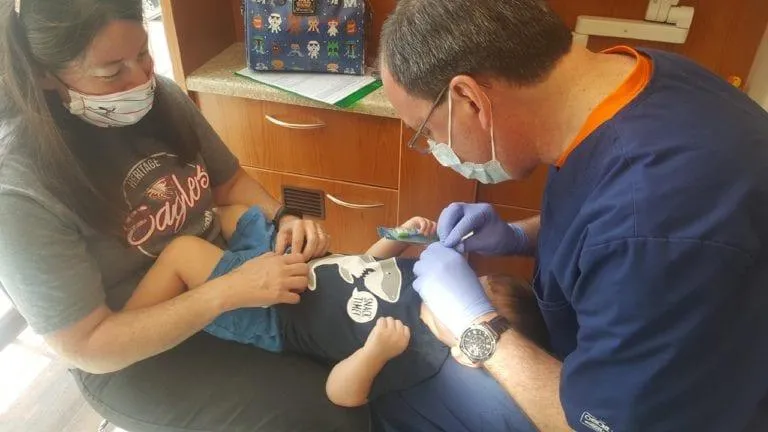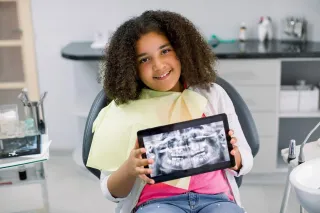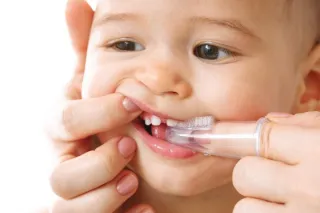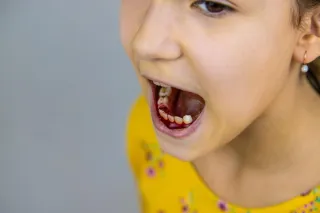
WELCOME TO
JOBY HURST PEDIATRIC DENTISTRY!
Here at the pediatric dental office of Dr. Joby Hurst, we take pride in offering our young patients the highest quality of dental care in a kid-friendly environment. We are conveniently located in Birmingham, Alabama and are experienced in providing routine dental care for infants, children, teens and patients with special needs.
Dr. Hurst and his team of friendly professionals work together to provide a positive dental experience that will make your child smile! We promise to work with you and your child personally and create a customized treatment plan to meet your individual needs and desires.
Office tour
Early Dental Care
We believe early dental care can promote a lifetime of healthy smiles for your child. We offer a full range of services from routine dental exams and cleanings to fillings, sealants and fluoride treatments that will help ensure that your child grows up with a healthy smile.
Sedation Dentistry
We recognize that for some of our patients, a visit to the dentist makes them a bit nervous.
We offer nitrous oxide sedation for our more apprehensive patients, so they can relax while receiving the dental care that they need.
For those requiring more intensive treatment, Dr. Hurst offers in office anesthesia using Dr. Jeff Plagenhoef.
Dr. Jeff is a board-certified pediatric anesthesiologist with Pediatric Dental Anesthesia Associates.
We appreciate your interest in our practice and encourage you to continue exploring our website to learn more about us. Feel free to contact us to schedule an appointment with Dr. Joby Hurst today!

Blogs and Resources

Shining a Light on Tiny Teeth: Are Dental X-rays Safe for Children?
Are dental x-rays safe for our precious little ones? Let’s delve into the world of dental x-rays for children, exploring the benefits and drawbacks. ...more
Dental Emergencies
April 01, 2024•8 min read

Building a Healthy Tooth Care Routine for your Baby: Here's How
Taking care of your baby's teeth is essential to ensure their long-term oral health. Establishing a tooth care routine not only helps prevent tooth decay and gum disease, but also sets the foundation ... ...more
Tooth Care
March 01, 2024•8 min read

Instilling Preventative Dental Habits for Healthy Smiles in Kids
Taking care of your child's teeth at an early age can lead to a lifetime of good oral health. Learn here how to instill preventative dental habits in your child. ...more
Prevention
February 08, 2024•16 min read

Pediatric Dentistry: Guide to Early Dental Care for Your Child
When it comes to the health of our children, dental care often takes a backseat. But, pediatric dentistry and early dental care is crucial for kids’ oral health. Read this guide to learn more. ...more
Early Dental Care
January 01, 2024•11 min read

Knocked-Out Tooth? Save Your Child's Smile (Quick Guide)
Knocked-out teeth, also known as avulsion, are a type of dental injury in which a tooth is completely dislodged from its socket due to a variety of causes. ...more
Dental Emergencies
December 15, 2023•7 min read

How To Prevent Tooth Decay In Toddlers
Unsightly stains on your toddler’s teeth? It may be more than that. Tooth decay in toddlers is quite common, and although the sight of brown ...more
Oral Hygiene
November 15, 2023•5 min read

19 INVERNESS CENTER PARKWAY, STE 250, BIRMINGHAM, AL 35242
TEL: 205.969.7454
E-MAIL: INFO@HURSTPEDIATRICDENTAL.COM
2018 © ALL RIGHTS RESERVED | PRIVACY POLICY | TERMS AND CONDITIONS
Site by Trustway Marketing Powered by Kyrios Systems